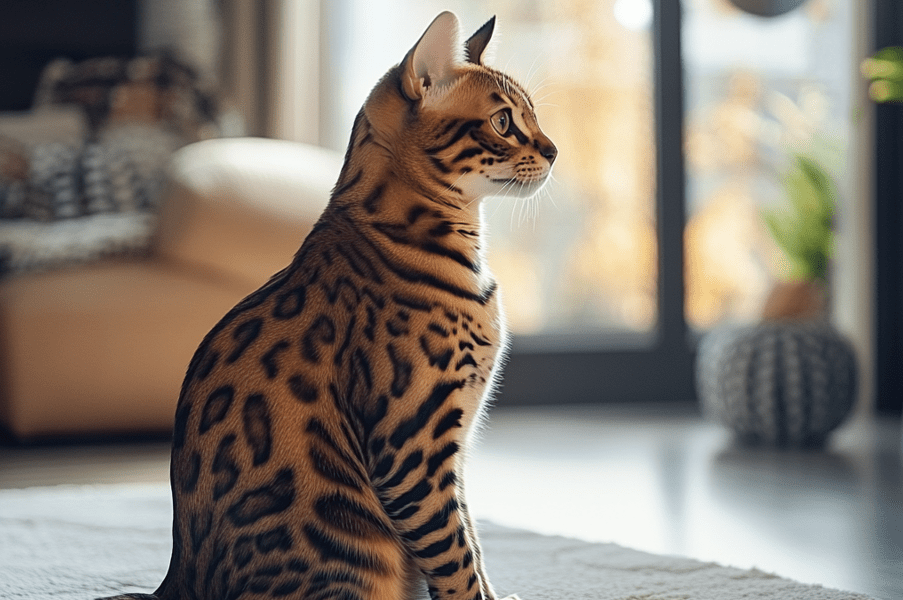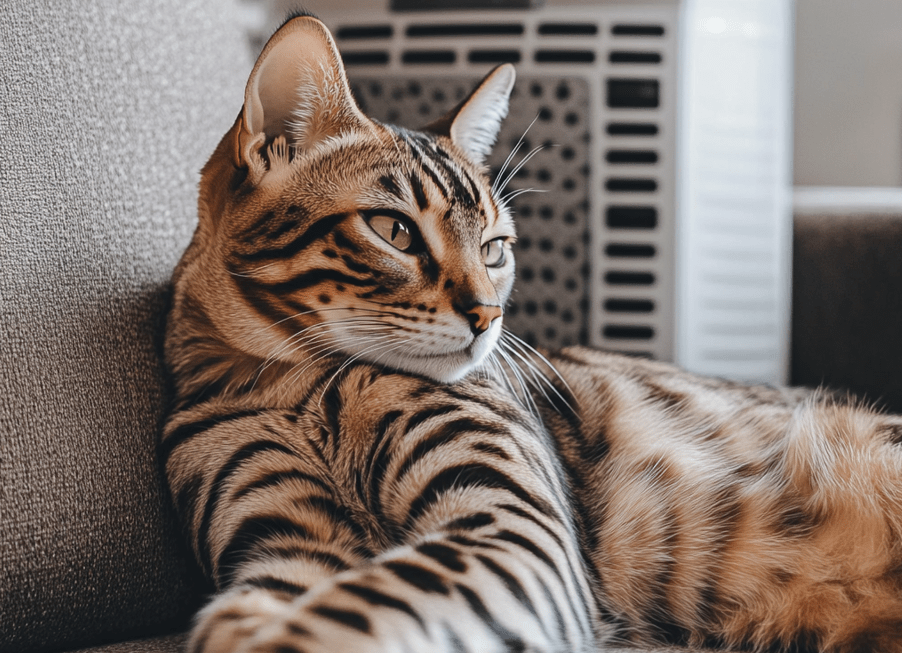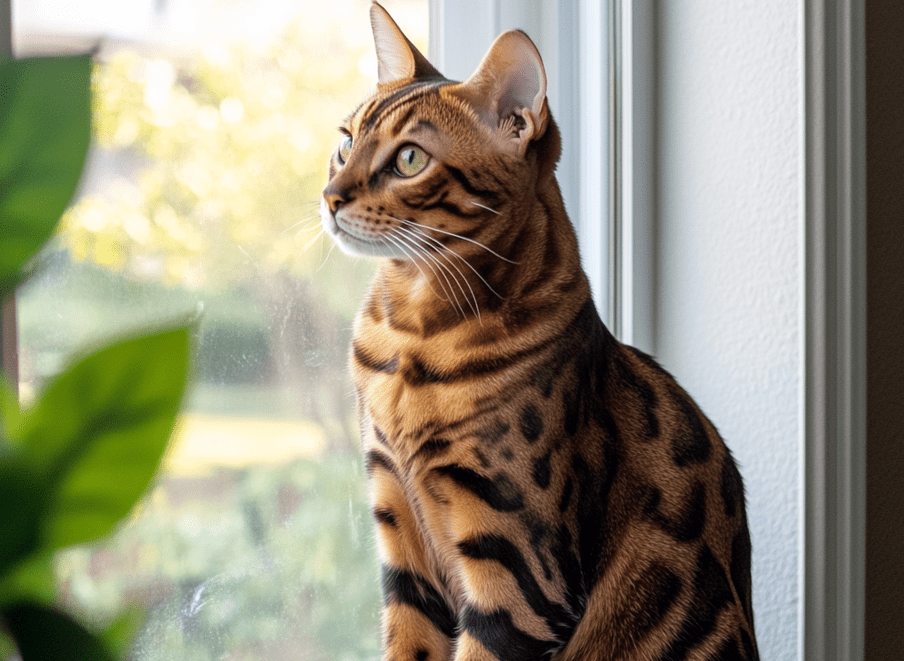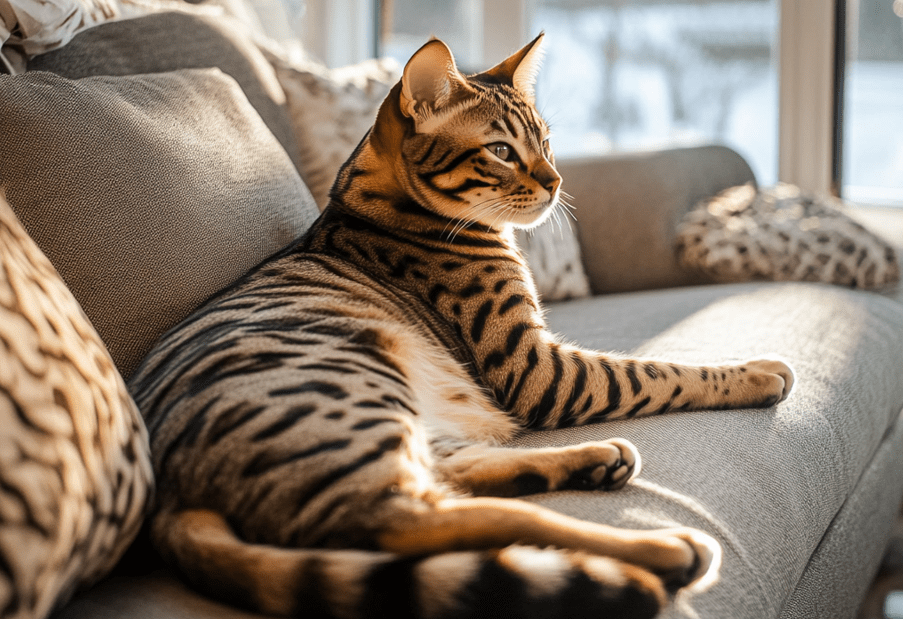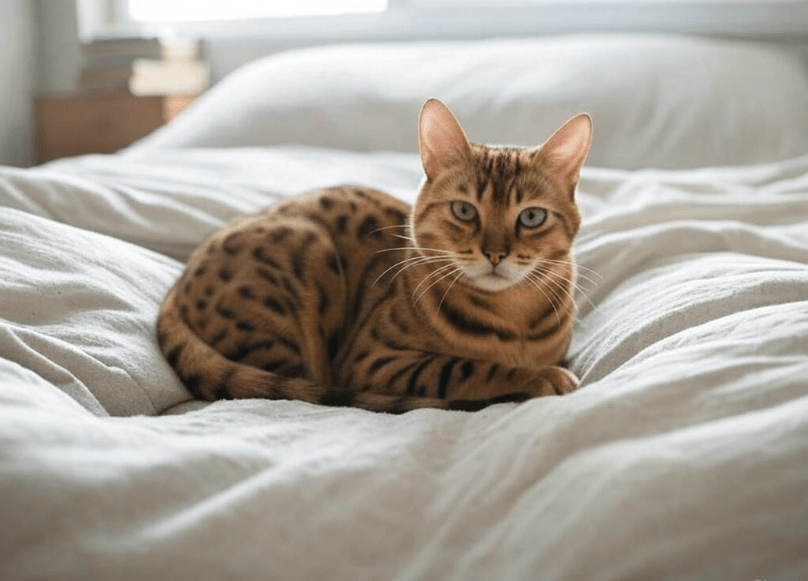
Bengal cats, with their stunning spotted coats and energetic personalities, are a beloved breed known for their playful and social nature. However, these traits can sometimes lead to separation anxiety in Bengal cats, a condition where they experience stress or distress when left alone. If you’re a Bengal cat owner noticing signs of clinginess, excessive vocalization, or destructive behavior, your feline friend might be struggling with this issue. Understanding and addressing separation anxiety is crucial to ensuring your Bengal’s well-being and maintaining a harmonious home environment.
In this comprehensive guide, we’ll explore the causes, symptoms, and effective strategies to manage separation anxiety in Bengal cats. Whether you’re a new Bengal owner or a seasoned pet parent, this article provides actionable insights to help your cat feel secure and content, even when you’re not around. Let’s dive into everything you need to know about this condition and how to support your Bengal cat.
What is Separation Anxiety in Bengal Cats?
Separation anxiety occurs when a cat becomes overly attached to its owner or environment and experiences distress when separated. Bengal cats are particularly prone to this due to their high intelligence, social nature, and need for stimulation. Unlike some breeds that are more independent, Bengals thrive on interaction and can become stressed when left alone for extended periods.
This condition manifests through various behaviors, such as excessive meowing, destructive scratching, or inappropriate elimination. Recognizing these signs early allows you to take proactive steps to alleviate your cat’s anxiety and improve their quality of life.
Why Are Bengal Cats Prone to Separation Anxiety?
Bengal cats were developed by crossing domestic cats with the Asian leopard cat, resulting in a breed with wild-like traits and a strong need for engagement. Several factors contribute to their susceptibility to separation anxiety:
High Social Needs: Bengals form strong bonds with their owners and crave companionship.
Intelligence and Curiosity: Their sharp minds require constant mental stimulation, and boredom can exacerbate anxiety.
Energy Levels: As an active breed, Bengals need physical activity to stay balanced.
Sensitivity to Change: Bengals are sensitive to disruptions in routine, such as changes in their owner’s schedule or environment.
Understanding these traits helps explain why your Bengal might struggle when left alone and informs the strategies you can use to help them cope.
Recognizing the Symptoms of Separation Anxiety in Bengal Cats
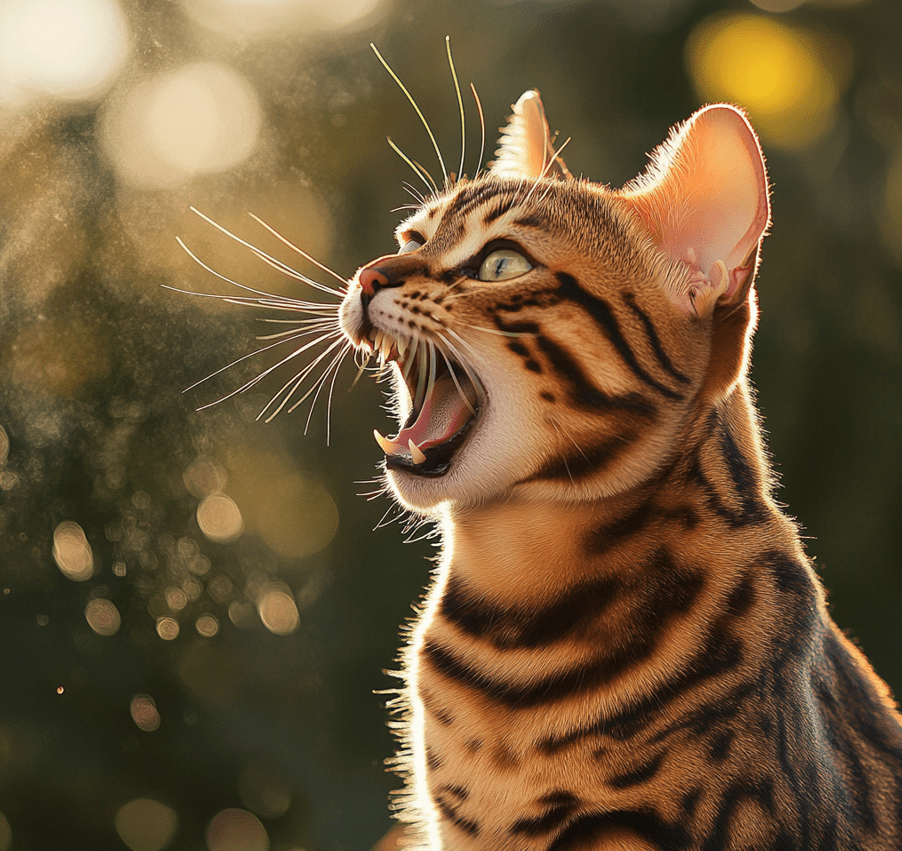
Identifying separation anxiety in your Bengal cat is the first step toward addressing it. Symptoms can vary in intensity and may not always be immediately obvious. Here are the most common signs to watch for:
Excessive Vocalization: Persistent meowing, yowling, or crying when you’re preparing to leave or after you’re gone.
Destructive Behavior: Scratching furniture, chewing on household items, or knocking things over.
Inappropriate Elimination: Urinating or defecating outside the litter box, often in areas associated with the owner, like beds or clothing.
Clinginess: Following you around the house, demanding constant attention, or becoming overly affectionate.
Loss of Appetite: Refusing to eat or drink when alone.
Over-Grooming: Excessive licking or chewing on their fur, sometimes leading to bald patches.
Pacing or Restlessness: Inability to settle down, especially when they sense you’re about to leave.
If you notice these behaviors, particularly when they occur primarily in your absence, your Bengal may be experiencing separation anxiety. Tracking these behaviors using a journal or pet camera can help you confirm the issue and discuss it with a veterinarian or feline behaviorist.
Causes of Separation Anxiety in Bengal Cats
Several factors can trigger or worsen separation anxiety in Bengal cats. Understanding these causes allows you to tailor your approach to your cat’s specific needs. Common causes include:
Lack of Early Socialization: Bengals that weren’t exposed to varied environments or periods of solitude as kittens may struggle with being alone later in life.
Changes in Routine: A new work schedule, moving to a new home, or the addition/loss of a family member can disrupt your cat’s sense of security.
Boredom or Under-Stimulation: Without enough mental or physical activity, Bengals may channel their energy into anxious behaviors.
Trauma or Past Experiences: Rescue Bengals or those with a history of abandonment may be more prone to anxiety.
Over-Attachment: Spending excessive time with your cat without teaching them to be independent can lead to over-reliance on your presence.
By identifying the root cause, you can implement targeted solutions to reduce your Bengal’s anxiety and help them feel more comfortable when alone.
How to Manage and Treat Separation Anxiety in Bengal Cats
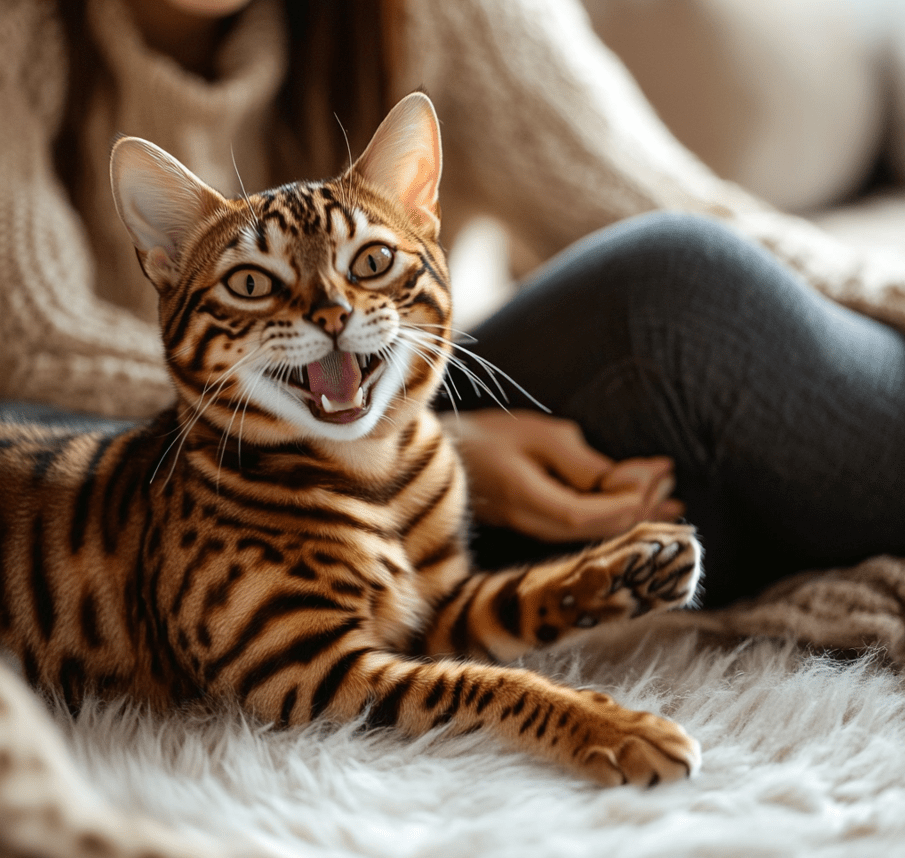
Addressing separation anxiety in Bengal cats requires a combination of environmental enrichment, behavior modification, and, in some cases, professional support. Below are proven strategies to help your Bengal cope with being alone.
1. Create a Stimulating Environment
Bengal cats thrive in environments that engage their senses and challenge their intellect. A stimulating home can reduce anxiety by keeping your cat occupied while you’re away. Try these ideas:
Interactive Toys: Puzzle feeders, treat-dispensing toys, and laser pointers provide mental stimulation. Rotate toys regularly to maintain interest.
Climbing Structures: Cat trees, shelves, or window perches allow Bengals to explore vertically, satisfying their need for adventure.
Window Views: Place a perch near a window so your cat can watch birds or outdoor activity, which can be highly entertaining.
Safe Hiding Spots: Provide cozy spaces like cat tunnels or boxes where your Bengal can retreat if feeling stressed.
2. Gradual Desensitization to Alone Time
Teaching your Bengal to tolerate being alone requires gradual exposure to solitude. This process, known as desensitization, helps your cat associate your absence with positive experiences. Follow these steps:
Start Small: Leave your cat alone for short periods (5–10 minutes) and gradually increase the duration as they become more comfortable.
Neutralize Departure Cues: Avoid making a big fuss when leaving or returning. Practice picking up keys or putting on shoes without leaving to reduce anxiety triggers.
Positive Reinforcement: Reward your cat with treats or praise when they remain calm during brief absences.
3. Establish a Consistent Routine
Bengals thrive on predictability, and a consistent daily routine can reduce stress. Incorporate these elements into your cat’s schedule:
Regular Feeding Times: Feed your cat at the same times each day to create a sense of stability.
Play Sessions: Engage in interactive play (e.g., chasing a feather wand) for 15–20 minutes before leaving to tire them out.
Litter Box Maintenance: Ensure the litter box is clean and accessible, as stress can lead to litter box avoidance.
4. Use Enrichment to Combat Boredom
Boredom is a major contributor to separation anxiety in Bengal cats. Keep your cat engaged with these enrichment activities:
Food Puzzles: Encourage problem-solving by hiding kibble in puzzle toys.
Scent Games: Hide treats or catnip around the house for your Bengal to find.
Training: Teach your Bengal simple tricks, like “sit” or “high-five,” to stimulate their mind and build confidence.
Background Noise: Leave a radio or TV on at low volume to provide comforting background noise.
5. Consider a Companion
Bengals are social creatures, and introducing a compatible pet can help alleviate loneliness. Another cat or a cat-friendly dog can provide companionship, but ensure proper introductions to avoid stress. If you’re unsure, consult a feline behaviorist to determine if a second pet is appropriate.
6. Pheromone Therapy and Calming Aids
Pheromone diffusers, sprays, or collars (e.g., Feliway) mimic natural feline pheromones, creating a calming effect. Other calming aids include:
CBD for Cats: Consult your vet about vet-approved CBD products designed for feline anxiety.
Herbal Supplements: Products containing chamomile or valerian root may help, but always check with a veterinarian first.
Calming Treats: Treats formulated with L-theanine or other calming ingredients can promote relaxation.
7. Consult a Veterinarian or Behaviorist
If your Bengal’s anxiety persists or worsens, seek professional help. A veterinarian can rule out medical issues that may mimic anxiety, such as urinary tract infections or pain. A feline behaviorist can develop a customized behavior modification plan to address severe cases. In some instances, anti-anxiety medication may be prescribed as a last resort.
8. Avoid Punishment
Punishing your Bengal for anxious behaviors, such as scratching or vocalizing, can worsen their stress and damage your bond. Instead, focus on positive reinforcement and creating a supportive environment.
Preventing Separation Anxiety in Bengal Cats
Prevention is often easier than treatment. If you’re bringing home a Bengal kitten or adopting an adult, take these steps to foster independence and resilience:
Socialize Early: Expose kittens to different people, environments, and short periods of alone time to build confidence.
Encourage Independence: Avoid constant attention by providing toys and activities your cat can enjoy solo.
Maintain a Stable Environment: Minimize sudden changes in routine or household dynamics.
Train for Alone Time: Gradually increase the time your cat spends alone to normalize solitude.
Common Mistakes to Avoid
When addressing separation anxiety in Bengal cats, steer clear of these pitfalls:
Ignoring the Problem: Untreated anxiety can lead to health issues or chronic stress.
Over-Coddling: Excessive attention can reinforce clingy behavior.
Inconsistent Routines: Frequent changes in schedule can heighten anxiety.
Skipping Veterinary Advice: Always consult a vet to rule out underlying medical issues before assuming behavioral causes.
Conclusion

Separation anxiety in Bengal cats is a manageable condition with the right approach. By understanding your Bengal’s unique needs and implementing strategies like environmental enrichment, desensitization, and routine consistency, you can help your cat feel secure and content when alone. Always monitor your cat’s progress and seek professional guidance if needed to ensure their well-being.
With patience and dedication, you can transform your Bengal’s experience of solitude from stressful to serene, strengthening your bond and creating a happier, healthier home for both of you. Start implementing these tips today, and watch your Bengal thrive, even when you’re not by their side.

